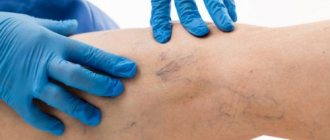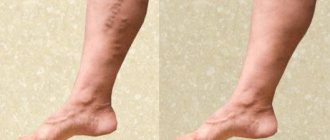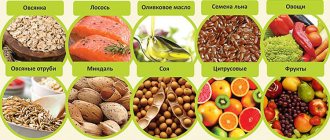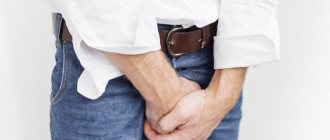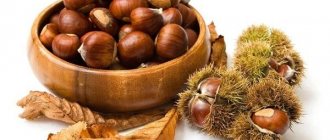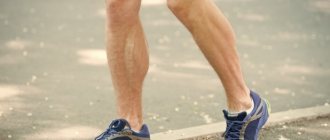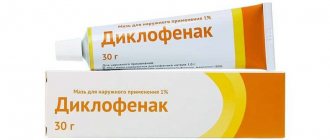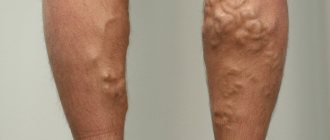If you want to avoid varicose veins, you should take care of it in a timely manner. The statistics of the disease are convincingly bleak, and they give some very frightening percentages! Especially for the female population of the planet. Of course, at a young and active age, your thoughts are not directed in any way to varicose veins - life is busy, you have plenty of strength, and oh, how far away you are from the venerable years of your beloved grandmother with ugly knots on her legs! However, varicose veins are an insidious disease. And he gets younger every year. So we need to fight now. As long as the veins are healthy, prevention won’t take much time.
Features of prevention
Varicose veins - chronic venous insufficiency with deformation of the veins can be prevented if you follow the doctor's recommendations. Prevention of varicose veins has two goals:
- help those who have not yet encountered manifestations of the disease, but are at risk;
- facilitate the course of the pathology for people who have already been diagnosed with varicose veins.
In both cases, measures to prevent varicose veins are common for women and men:
- avoid too high temperatures when taking baths or being in the sun - this reduces the tone of the veins and provokes congestion;
- move a lot: run, swim, walk;
- avoid lifting heavy objects;
- control weight - extra pounds affect the condition of blood vessels, increasing the volume of circulating blood and the load on the veins;
- eat rationally;
- do not wear tight clothing that compresses the veins;
- do not sit cross-legged, do not remain in a static position standing or sitting for a long time, pour cold water on your feet in the evenings;
- limit wearing shoes with heels (no higher than 3-4 cm) or tight in size;
- to refuse from bad habits;
- undergo periodic massage or self-massage;
- avoid colds, stress, chronic fatigue;
- undergo an annual medical examination.
Following the recommendations will help prevent varicose veins or stop the progression of the pathology, especially for women at risk.
Video: “Light on your feet.” Exercises for varicose veins
is not responsible for the accuracy of the information presented in this video clip. Source – Olga Sagay
Sources:
- PREVENTION OF VARICOSE DISEASE OF LOWER EMBARKS IN POWERLIFTERS. Dalsky D.D., Naumenko E.V. // Scientific notes of the University named after. P.F. Lesgafta. – 2012. – No. 7(89). – pp. 49-53.
- Prevention and treatment of complications of varicose veins in the postpartum period. Naumenko N.N. // Topic of the dissertation and abstract on the Higher Attestation Commission of the Russian Federation 14.00.01. – M. – 2005.
- https://www.dissercat.com/content/profilaktika-i-lechenie-oslozhnenii-varikoznoi-bolezni-v-poslerodovom-periode
- https://www.mayoclinic.org/diseases-conditions/varicose-veins/symptoms-causes/syc-20350643
- https://en.medixa.org/illnesses/varicose-veins-prevention
For an accurate diagnosis, contact a specialist.
Who is at risk?
Varicose veins occur under the influence of a number of factors that several categories of people encounter more often than others. At risk:
- people engaged in physical labor and professional sports;
- patients with a hereditary predisposition;
- “fat men” and “fat women”;
- patients with hormonal imbalance;
- office workers whose work involves a sedentary lifestyle;
- people with problems with the digestive system;
- patients with congenital heart defects;
- pregnant women;
These risk groups do not have clear boundaries, so doctors recommend carefully monitoring the veins in the legs for everyone who does not fit into any group of factors for the development of varicose veins.
How to prevent varicose veins on the legs using folk remedies
In order to reduce the risk of varicose veins, folk recipes based on the use of herbal ingredients can be used.
The essential oils contained in nettle increase the tone of the veins. To prepare the infusion, the leaves of the plant are washed with cold water and dried for 5 days in a dark place. The dried nettles are crushed, placed in a glass container, and 250 milliliters of vodka are added. The composition is infused for 3 days, filtered through gauze. The product is taken before each meal, a teaspoon diluted in a glass of water.
Ground nutmeg can be used to strengthen the vascular walls. A teaspoon of the latter is poured into a glass of boiling water, and a small spoon of honey is added.
Drink nutmeg and water 60 minutes before meals.
Horse chestnut is also used to prevent pathological varicose veins. Place 100 grams of plant inflorescences in a liter of alcohol and leave for 2 weeks, shaking the container periodically. The tincture is diluted in a small amount of water and drunk three times a day before meals.
When making a tincture of fragrant rue, 50 grams of dry crushed herbs are poured with 250 milliliters of alcohol and placed in a dark place for 14 days. The composition, previously diluted with water, is taken 15 drops in the morning.
Rubbing with apple cider vinegar helps relieve swelling and a feeling of heaviness in the legs. Moisten a cotton pad with a small amount of this liquid and wipe it over areas of the skin with dilated veins. There is no need to rinse off the product after the procedure.
Baths with pine salt improve blood flow in the lower extremities. To carry out the procedure, add 300 grams of this salt to hot water.
Drug treatment of varicose veins
Chronic venous insufficiency can be corrected with medications prescribed by a doctor in the early stages of the pathology. Prevention of varicose veins of the lower extremities is carried out by several main groups of systemic drugs:
- Phlebotonics (venotonics) with angioprotective properties, capable of increasing the tone of the vascular wall, improving microcirculation, lymphatic drainage, and removing stagnation: Detralex, Venarus, Phlebodia 600, Troxevasin, Antistax.
- Anticoagulants - direct and indirect action, drugs that thin the blood, prevent thrombosis and antiplatelet agents that prevent the formation of blood clots: Hepatrombin, Heparin, Klivarin, Cardiomagnyl, Clexane.
- Nonsteroidal anti-inflammatory drugs that relieve inflammation in the vascular wall, relieve pain, and prevent the development of complications: Olfen, Nise, Nimesulide, Ketorol, Voltaren.
An individual treatment regimen is drawn up by a phlebologist, vascular surgeon, angiologist, who can also prescribe local therapy: gels, ointments, creams that relieve inflammation, pain, increase vascular tone: Lyoton-gel, Varicosette, Troxevasin ointment.
Self-medication can be destructive, causing a sharp deterioration in general health, progression of varicose veins, complications, so even traditional recipes should be agreed with a doctor.
Medications for the prevention of varicose veins
Prevention of varicose veins in the legs is carried out after consultation with the attending physician, who can professionally assess the condition of the vascular system as a whole and the veins in the legs. The vascular surgeon, in accordance with the picture he sees, will prescribe medications to help avoid the development of the disease.
When a patient is at risk of varicose veins, he needs not only to follow recommendations in diet and lifestyle, but also to support the blood vessels of the legs through the use of medications whose action is aimed at:
- to strengthen the vascular system as a whole;
- improving blood quality;
- normalization of blood circulation in the body;
- strengthening the immune system.
The pharmaceutical industry is rich in offerings of products that can prevent varicose veins on the legs. These may be oral medications, topical creams and ointments. A phlebologist should give recommendations and prescribe medication, based on the condition of the patient’s legs and his tests. Self-medication in the prevention of varicose veins can be disastrous. It can provoke a sharp progression of the disease.
Among the tablets whose task is to prevent varicose veins:
- Detralex (30 tablets of 500 mg - average price 850 rubles);
- Venarus (20 tablets of 500 mg - cost from 550 rubles);
- Phlebodia (50 tablets of 500 mg - approximate price 1300 rubles).
These are venotonic drugs, the active ingredients of which are aimed at strengthening vascular walls and venous tone. They improve blood microcirculation, help accelerate the process of outflow of lymphatic fluid, have angioprotective properties and should be taken only if the patient has real manifestations of the disease or the first symptoms of varicose veins.
These medications contain heparin, troxerutin or hirudin, substances that are necessary for blood vessels if there is a manifestation of the inflammatory process, there are areas of fragility of the veins and impaired elasticity. Due to the mineral components in the composition, the composition of the blood improves, its viscosity decreases and blood circulation is normalized.
Ointments and creams during preventive procedures
A phlebologist can also prescribe medications for topical use, these are gels, ointments, creams that enhance venous tone, strengthen the walls of blood vessels, and reduce inflammation. Among the range of such products, the main ones with proven effectiveness can be identified:
- Varicosette;
- Listerine Nano;
- Clean Legs.
These are soft preparations that allow you to increase blood flow also due to the specifics of application. A person spreads cream or ointment on the skin of the legs, rubs it in a circular motion, which helps to increase blood flow and increases the microcirculation process. The ointment is not absorbed very quickly, but the film that forms on the skin helps the active substances penetrate the epidermis faster. Due to the formation of a microgreenhouse effect, the components of the drug penetrate even into the deep layers of the skin, which has a beneficial effect on the condition of the vascular system of the legs. Creams and gels are absorbed much faster, but for a full effect, after applying them, it is better to wrap your feet in cling film, unless this is prohibited in the instructions for use.
The application of topical medications goes well with self-massage. Since the patient has not yet developed blood clots, the massage can be performed with enhanced skin massaging. This will not only increase the speed of distribution of the components of the medication due to heating, but will also improve blood supply to the lower extremities, eliminate blood stagnation, and prevent the formation of blood clots - thrombi.
Traditional medicine recipes
Prevention of varicose veins on the legs is carried out with the help of traditional medicine, the recipes of which are passed down from generation to generation, but are constantly being improved. The main thing that ensures the popularity of herbal medicine is the natural composition of decoctions, infusions, tinctures and affordable prices.
Prevention of varicose veins at home is carried out with herbal collections based on horse chestnut, chamomile, beet and carrot tops, coltsfoot, calendula, wormwood, Kalanchoe, aloe, oak bark, rowan berries, rose hips, and sea buckthorn. These can be homemade tinctures and ointments or purchased at a pharmacy. The most effective for the prevention of varicose veins:
- grape seed oil, which contains a special substance that restores elasticity to blood vessels;
- castor oil from castor beans, capable of dissolving stagnant blood in the veins, inflammation;
- aspirin bandaging: 5 aspirin tablets are crushed into powder, poured into a glass of hot water, dissolved, soaked in a sterile bandage, bandage the sore leg for an hour, you can insulate the limb (this method has no contraindications);
- burdock (burdock leaves) is applied overnight to the area of the vascular bed affected by varicose veins, fixed with a bandage (you can first lubricate the skin with Vishnevsky ointment);
- ointment from calendula flowers with analgesic and anti-inflammatory properties: 200 g of fat or olives are mixed with calendula flowers, boiled, cooled slightly, filtered, applied to the affected areas, stored in the refrigerator;
- garlic with lemon restores blood flow: the product is taken orally, for preparation you need 4 chopped heads of garlic, 4 lemons, which are poured with hot water (3 l), leave for three days, constantly stirring the mixture, filter, store in the cold, drink a tablespoon three times / day for a month (danger signal – heartburn);
- apple cider vinegar prevents blood clots: per glass of warm water - 2 teaspoons of homemade (not store-bought!) apple cider vinegar, a teaspoon of honey, course of intake - 1.5 months.
Medicines
Medicines are prescribed by a doctor for each individual, based on the clinical picture of the disease. Their action should be aimed at the following points:
- Effective relief of symptoms of varicose veins by thinning the blood, reducing swelling of the legs and their heaviness;
- Increased tone of the venous walls;
- Reducing possible complications of the disease.
Among the effective and relatively safe medications are:
- Venarus. An affordable drug from a domestic manufacturer. It is a venotonic that improves lymphatic drainage and blood microcirculation. The package contains 20 tablets.
- Antistax. Sold in the form of capsules that contain red grape leaf extract. The medication reduces pressure in blood vessels, strengthening their walls and improving blood movement.
- Detralex. The medicine from the French manufacturer is used for blood flow disorders; it can prevent the formation of blood clots in blood vessels. The package contains 30 tablets.
- Troxevasin. It has two forms of release: gel and capsules. In each of them, the active ingredient is troxerutin. The drug has a strengthening and tonic effect, is effective in relieving swelling and inflammation. You can use two of its forms at once, externally and internally.
- Vaso collected. It contains caffeine, which tones the vein walls and improves blood flow.
External agents can be used together with medications to enhance their effect and quickly cope with the disease.
Proper nutrition
Prevention of varicose veins in the legs includes a special nutrition system. Very important:
- stop eating salt to balance electrolyte metabolism (no more than 4 g);
- exclude canned food, smoked meats, sausages;
- avoid overeating, do not eat at night, exclude fast food;
- calculate the drinking ration (30-40 ml per kilogram of weight);
- include as many vegetables, fruits, berries in your diet as possible, count calories;
- sanitize diseases of the digestive system.
The diet for varicose veins is quite gentle. There are permitted and prohibited products that affect blood viscosity. They are presented in the table.
| Authorized Products | Prohibited Products |
| Compotes, fruit drinks | Alcohol |
| Steamed, boiled, baked food | fried food |
| Lenten products | Fatty foods |
| Sweeteners with delayed absorption in the intestines | Light carbohydrates |
| Herbal teas | Strong tea, coffee |
| Natural vegetables, fruits | Products with preservatives |
| Dried fruits | Sweets, baked goods |
Special underwear
An excellent method of preventing varicose veins is compression garments. It retracts the lower limbs and does not impede the supply of oxygen and nutrients to the tissues. This effect occurs due to the smooth transition of constraint. This figure is 100% in the shins; when moving to the knees it decreases to 70%. At the level of the hips, such knitwear compresses the lower limbs by only 40%, and in the groin area it is only 20%.
This structure of the underwear accelerates blood flow in those areas where there is a risk of developing varicose veins. Orthopedic clothing is represented by different products. These can be tights, both men's and women's, stockings, socks.
Tights are most often used for the prevention and treatment of varicose veins. They tightly cover the limbs. It is important to choose them exactly according to your size, otherwise you will not be able to achieve a therapeutic effect. The elastic band of such clothing should be fixed at the waist. If the skin of your legs is dry, you can apply a special moisturizing gel before putting on orthopedic tights.
During pregnancy, this problem develops very often, so there are special models designed specifically for this category of people. They are distinguished by their shape and structure to prevent pressure on the abdomen.
Some women are afraid of affecting the fetus with such tights, so they use stockings to prevent varicose veins in the legs in pregnant women. But this type of orthopedic knitwear can also be worn by other categories of patients.
Stockings can be of different types: single- and double-sided, with a closed or open toe, with a belt that allows you to fix their waist. Which one to use depends only on individual needs.
Compression socks are widely used to prevent this pathology, especially among men and people involved in sports. However, this type of underwear is contraindicated for:
- open wounds on the legs;
- trophic ulcers;
- eczema;
- nonspecific aortoarteritis;
- atherosclerosis;
- endarteritis of the legs.
Using compression garments
Prevention of varicose veins is provided by special compression underwear, affordable and of excellent quality knitwear. However, before using this method of prevention, you need to consult a doctor, since sometimes compression is unwise.
As a rule, compression hosiery does not cause discomfort, but often stockings or knee socks can be replaced with elastic bandages. The essence of preventing varicose veins by compression is mechanical pressure on dilated vessels. By compressing pathological veins, underwear or bandages increase vascular tone, thereby improving blood flow and relieving stagnation.
A phlebologist will help you determine which type of compression garment is right for you. Compression should be worn when heavy loads on the legs are expected (training, sports competitions, long hikes, walks). Tights and stockings for varicose veins are prescribed for pregnant women.
Prevention of varicose veins
The state of the circulatory system directly affects the functioning of the body as a whole. Therefore, if it is affected by pathology, then it is unlikely to go unnoticed by other systems. Prevention is unlikely to be able to completely eliminate varicose veins as a potential disease, but it can increase the chances of not getting it – 100%.
This is the most difficult recommendation to implement. It requires strong-willed efforts that will motivate you to overcome the way of life and lifestyle developed over the years. Therefore, first of all, changes must affect the way of thinking. But it is important to understand that the quality of life will depend on this.
- Serious changes will affect the daily routine. There must be a balance between work and rest. Work, if it is “sedentary” or “standing”, or is associated with excessive physical and psychological stress, should be compensated by rest. This is especially true for athletes, hairdressers, flight attendants, etc.;
- Rest should not be passive. Give preference to spending time outdoors. For example, take a walk or bike ride. Play sports. Swimming, aerobics, light running and yoga are great for these purposes. Moderate physical activity is the best prevention not only of varicose veins, but also of most painful conditions;
- Periodic massage sessions will also be useful for strengthening and toning blood vessels and veins.
All these recommendations must be taken into account when preventing varicose veins in children.
When preventing varicose veins, it is necessary to give the legs only a feasible load and protect them from impact training. Avoid fast running, jumping, lunges, squats, and crunches, as such exercises can aggravate the problem.
- Give up bad habits. The presence of bad habits is incompatible with the concept of a healthy lifestyle. Alcohol creates favorable conditions for increasing blood clotting. And tobacco causes vasospasm, destruction of vitamin C, collagen and elastin;
- Nutrition should be rational. It is necessary to adhere to dietary rules, and then a number of problems will be eliminated, such as: excess weight, insomnia, etc. By eating properly, you will allow the body to stock up on useful substances and independently accumulate strength to fight the disease. In order to provide the body with all the necessary vitamins and minerals, additional sources from a series of venotonics based on herbal components are also used. Due to their natural composition, such products act in several directions and can improve blood circulation, reduce the fragility and permeability of capillaries, and also strengthen the venous walls, clearing them of cholesterol;
- Do not neglect hardening and folk remedies for prevention. This preventive measure has great benefits for the veins. A contrast shower can get the proper tonic and strengthening effect. It will eliminate the feeling of heaviness and swelling of the lower extremities;
Physiotherapy
Performing a number of simple physical exercises is an integral part of a set of measures that involves the prevention of varicose veins. The main thing is systematicity. Only by doing the exercises at least twice a day for 10-15 minutes can you achieve results. Finding yourself in almost any situation, at home or at work, you can find an opportunity and a suitable exercise, the implementation of which will normalize blood flow and relieve heavy leg syndrome.
At home, the most popular exercises, familiar from childhood, are “Birch Tree”, “Bicycle” and “Scissors”. At your desk, during a long flight, or in a car, you can also stretch your legs, preventing venous stagnation: bend and straighten your toes, rotate your feet, lift your toes and heels off the floor, etc.
If you have vein problems, it is not recommended to lift heavy weights. In particular, this applies to professional weightlifters and amateur powerlifters, who often encounter varicose veins in their legs and arms.
To improve the flow of blood from the lower extremities, to prevent the occurrence of swelling, pain and deformed veins as a result, it is imperative to wear medical compression stockings every day. These can be socks, knee socks, stockings or tights to prevent varicose veins. You can also use an elastic bandage.
It is recommended to use topical products to care for the skin of the legs and superficial veins. Creams, gels and other venotonic drugs resist varicose veins and minimize their severity if they already exist - eliminate pain and heaviness in the legs, reduce the number of spider veins, have an anti-inflammatory effect and a cosmetic effect.
"NORMAVEN®" foot cream is suitable for use in cases of hereditary predisposition to vascular diseases, during pregnancy, with a sedentary lifestyle, etc. This product has undergone clinical studies, during which it was found that its systematic use for 3 months gives noticeable result.
Regular application of NORMAVEN® cream helps reduce the severity of vascular patterns, helps fight swelling, cramps, and a feeling of fatigue. Even 1 month of using the product gives a good effect. "NORMAVEN®" cream for the prevention of varicose veins and its manifestations at the initial stage can be applied under compression hosiery. This product does not lead to deformation of elastic fibers;
In order to create comfortable conditions for your feet during the day, it is important to carefully and correctly choose your shoes. It is recommended to avoid wearing narrow high-heeled shoes made of synthetic materials. What shoes should be considered safe? Shoes made from natural materials, with a strong heel and a heel no higher than 4 cm will help maintain healthy feet. The sole should be moderately flexible and thick. Trying on and purchasing should be done in the evening - when the legs are at their fullest.
It will not be possible to determine the best measure to combat diseases. The therapeutic effect is achieved exclusively through a complex of all measures. And remember, the main thing is a positive attitude and responsibility in following the recommendations!
Among the factors that contribute to recovery from varicose veins are:
- Selection of the optimal daily routine, this concerns daily sleep and rest, during which the legs will rest. In case of sedentary work, it is necessary to take breaks to walk and change the sitting position more often.
- Avoid the leg-over-leg position when sitting.
- During the day, you should change the height of the sole of your shoes; not only stiletto heels are harmful for varicose veins, but also flat soles. You should not wear tight clothing, as it pinches the groin area and lower limbs, impairing the movement of blood.
- When relaxing at sea, you need not only to swim, but also, if the beach is pebbly, to walk on it. For relaxation, choose one climate zone.
- Prevent constipation, as it causes increased pressure in the blood vessels in the pelvis.
These recommendations will help slow down the progression of varicose veins, and its prevention consists of proper nutrition, optimal physical activity and gymnastics, the use of medications and folk remedies to relieve symptoms and improve the condition of the veins.
Exercise therapy
Prevention of acute or chronic varicose veins in the legs is carried out with the help of therapeutic exercises. The doctor’s recommendations are mandatory, since not all sports are suitable for those at risk. In addition, the set of exercises will be different for those who are engaged in sedentary work or are forced to stand more on their feet in a static position.
To prevent varicose veins during office work, when a person sits most of the time, the following recommendations are suitable:
- if you feel heaviness in your legs, you need to take a break and walk a few meters along the corridor or simply stand and shift the folders on the table;
- after work, walk for 10 minutes (not shopping, but just for a walk);
- in the evening – baths with salt and herbal decoctions.
At work, whenever possible, you can perform exercises with a chair:
- sitting, slightly raise your knees, standing on your toes;
- get on a chair to the next table (provided that the chair is on wheels);
- With your knees bent, swing your legs above the floor for a couple of minutes.
For simple prevention of acute or exacerbation of chronic varicose veins during standing work (surgeon, cook, nurse, machine operator), you can do the following:
- walk to or from work (at least part of the way);
- evening relaxing baths;
- control weight;
- Do not wear clothes or underwear that constrict veins.
Exercises to relieve stress on your legs:
- rolling from heel to toe with support to maintain balance;
- walk along the corridor, raising your knees high;
- stand with your toes on the step higher, and lower your heels down, as if swinging on a swing, but with obligatory support;
- alternately roll the stick with your feet.
A phlebologist will help you choose an individual set of exercises.
Gymnastics
Gymnastics, which you can do yourself at home, will also help prevent the development of varicose veins. If done regularly, good results can be achieved.
You can do the exercises whenever it is convenient for you. After a short period of time, you will feel more strength in your legs, and they will also become less tired under the influence of loads.
- Walk for a few minutes in one place, raising your knees high.
- Roll on your feet. Holding onto some support, stand on your toes, then move smoothly onto your heels. Now do the opposite. Repeat about 20 times.
- This exercise can be performed without interrupting your work. Place a stick or pencil on the floor and roll it with your foot, and then try to grab it with your fingers. The duration is several minutes.
- Lie on the floor and lift your straight legs up so that the angle between them and your torso is 90 degrees. Make 8-10 crossing movements.
- In the same position, raise your legs up, and then bend your knees and straighten them sharply. Repeat 10 times.
- Lying on your back, do the bicycle exercise 15-20 times.
- Sit on the floor and stretch your legs forward. Bend towards your feet, trying to touch your chest with your knees. Do 10 repetitions.
- Place your right leg on your left leg and lift the first one several times. Then move the limbs in reverse and do the same movements.
- Tighten your toes for a few seconds and then slowly release. Do several reps.
- Do 15 squats, while holding on to the back of a chair.
- Place one foot on top of the other and make several rotational movements with the top. Then repeat in reverse.
- Walk around the room first on the outside of your foot, and then on the inside.
In addition to the above exercises, try to walk more often. You can gradually increase the distance.
Apitherapy
Apitherapy is considered a good way to prevent varicose veins: propolis, dead bees, honey are non-standard methods of preventing the disease, but effective, and therefore in demand, especially in rural areas.
The easiest way to get honey. Then, apply a layer of honey to the canvas and apply to the inflamed vessels. On top - polyethylene or a fixing bandage. The first day - the compress is kept on the leg for a couple of hours, the second - 3 hours, the third - 4, and then left overnight. The course is no more than a month.
Pharmacy creams and ointments
Products for external use contain hirudin, heparin and troxerutin; menthol and essential oils are additional components for moisturizing and toning effect.
They can come in three forms:
- Ointment. It forms an invisible film; its oily consistency is absorbed for a long time, but due to the greenhouse effect it creates, it promotes deep penetration of active substances.
- Cream. Easily absorbed, may leave a slight trace.
- Gel. Can be applied under compression garments, leaves no residue, is quickly absorbed, and can dry out the skin.
The application of such products should be accompanied by self-massage. He himself goes as a preventive method. When doing this, you need to stroke the skin of your legs, starting with your toes and moving upward, and then repeat light movements downwards. The massage lasts at least 10 minutes.
Among the well-known ointments and creams are:
- Lyoton 1000 is presented in the form of a gel, the composition of which prevents thrombosis and inflammation of the vein walls. It prevents the formation of trophic ulcers, and if they already exist, the remedy cannot be used.
- Hepatrombin is an ointment containing synthetic and natural components that relieve inflammation and swelling of the legs and improve blood flow. It can be applied to areas with trophic ulcers.
- Heparin ointment is an affordable remedy that reduces blood clotting and the formation of blood clots on the walls of veins. It has an analgesic effect and improves metabolic processes in the walls of blood vessels.
Hirudotherapy
Leeches act on the human body at the energetic, physiological, biochemical and even psychological levels. A wide spectrum of action is based on a large number of biologically active substances and enzymes in their saliva. Only two are known for certain: hirudin and destabilase. Both substances treat dilated veins by accelerating blood flow, saturating the blood with oxygen and other nutrients, and dissolving blood clots. During a bite, the leech successively suctions the blood and injects healing substances contained in the saliva, which leads to the expansion of the lumen of the veins and the outflow of blood.
For varicose veins, leeches are placed on the area of the liver, sacrum, womb, along the deformed vein in a checkerboard pattern, in the area of trophic disorders. The procedure is carried out 2 times/week, the course is no more than 10 procedures. It should be noted that official medicine is skeptical about leeches, fearing the possibility of infection of the patient and scars after suction.
Treatments to prevent varicose veins
The most effective way to prevent varicose veins is to ensure high-quality drainage of blood and lymph in the legs. To achieve this, it is recommended to use a variety of drainage procedures. The simplest and most accessible prevention of this type is to raise the legs above the level of the heart. Carry out the procedure during the day during rest, as well as in the evening and before bed.
Raising the legs leads to passive outflow of blood from the veins of the lower extremities under the influence of gravity. This method of prevention is considered effective for those who do not yet have early signs of varicose veins.
The second way to prevent varicose veins through drainage procedures is foot massage. You can do it yourself or take courses in a massage parlor or clinic. Its essence is the forced drainage of blood and lymphatic fluid from the lower extremities.
During the massage, soft but rhythmic movements are performed, directed from the foot to the groin area. They should be smooth and as uniform as possible, without excessive compression. After performing the massage, it is advisable to lie down for about half an hour with your legs elevated.
Drainage massage is strictly prohibited in case of severe swelling of the veins and signs of thrombosis.
Doctors call hardware lymphatic drainage a very effective, but costly way to prevent varicose veins. During the procedure, the lower limbs are affected by vacuum, electric currents, ultrasound and magnetic waves. The intensity and depth of the impact of hardware lymphatic drainage is many times greater than with a drainage massage: it not only prevents the appearance of varicose veins, but also eliminates signs of weakening of the veins when stage 1 of the disease is diagnosed.
In addition, hardware lymphatic drainage helps:
- eliminate signs of cellulite and stretch marks on the skin;
- strengthen and improve muscle tone;
- increase general immunity;
- reduce fat on the thighs.
To prevent varicose veins, the procedure can be performed twice a year in courses of 3-7 sessions.
Clay therapy
Clay treatment for varicose veins is used in the form of compresses, powders, and solutions for internal use. Clay is an excellent sorbent with low thermal conductivity, which is used for cooling compresses.
For preventive measures, clay of white color is used (antiseptic and regenerant), blue (normalizes metabolism, stops inflammation, stimulates microcirculation thanks to cobalt and cadmium), green (contains silver magnesium, gold - tones veins, metabolism), red (relieves anemia from - due to its iron content, has a beneficial effect on blood vessels). There are different methods of use: baths, applications, compresses.
Effect of diet
An integral part of the prevention of varicose veins is proper nutrition. To prevent its development, it is necessary to consume foods that have a beneficial effect on the condition of the walls of blood vessels, making them stronger, improving blood flow and reducing the risk of blood clots by reducing blood clotting.
All of the above functions are due to the action of such beneficial substances as rutin and quercetin. The largest amount of them is found in cabbage, tomatoes, buckwheat, berries, walnuts, and rose hips. Be sure to eat a lot of vegetables and fruits, and to preserve microelements and vitamins as much as possible, steam them or bake them in the oven.
If there is a risk of developing this disease, try not to eat fatty, fried, smoked, pickled, salty and spicy foods. To reduce blood clotting, drink at least 2 liters of fluid per day. Also try not to overeat and prevent the development of constipation, as this increases intra-abdominal pressure. And this sharply increases blood flow in the vessels of the lower extremities and negatively affects their condition. You need to eat food in small portions, but often.
